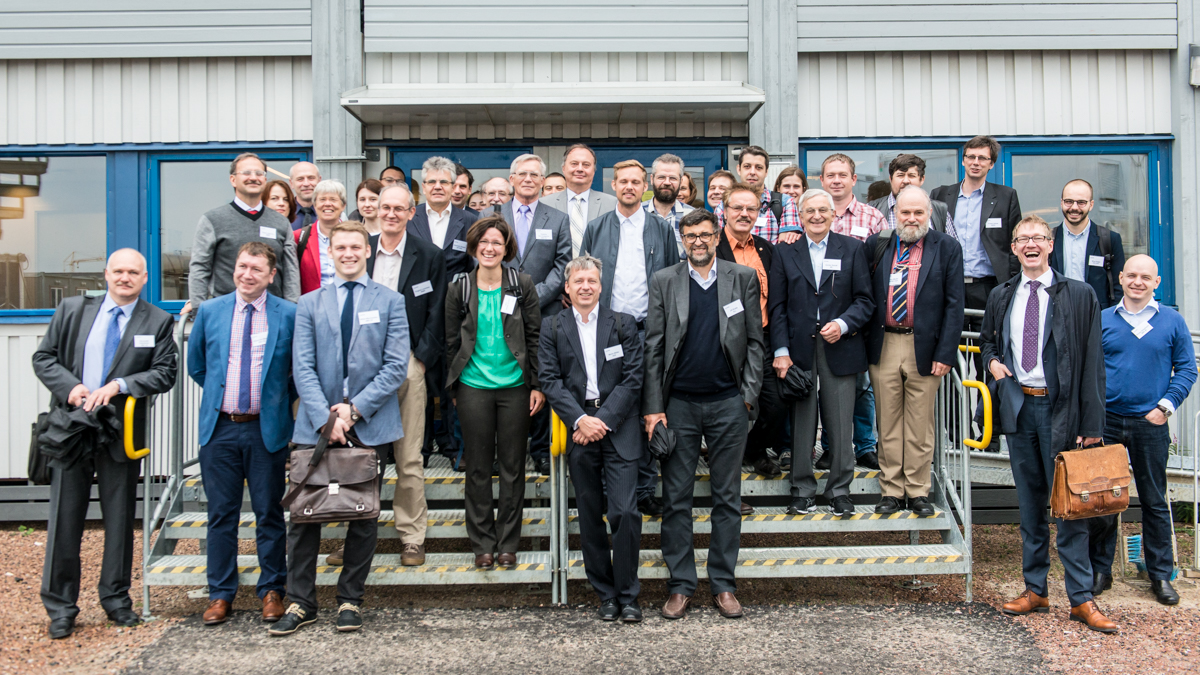Russian Megascience Facilities representatives meet the European Spallation Source

A delegation of 50 representatives from Russian and European large-scale facilities came together in Lund to discuss internationalization as a strategic issue in building, operating and scientifically exploiting large-scale research infrastructures in Russia and in Europe.
One of CREMLIN’s objectives is to establish an effective exchange platform for results and best practices and to stimulate a mutual learning process across the various science disciplines and facilities represented in the project. Under this objective, the workshop brought together various stakeholders from Russian and European scientific communities to discuss challenges related to internationalization, to share valuable experiences and to provide best practice guidelines.
Transnational research access is key
Jean Moulin, Chair of the CREMLIN Science Policy Advisory Board, Belgian Delegate to ESFRI from 2002 to 2016 and BELSPO Honorary General Advisor, underlined that transnational access policies to research infrastructures is a central element for the internationalization and long-term sustainability strategies of megascience facilities. The effective access of international scientific users to national facilities is essential for strengthening knowledge production, excellence in research, innovation performance and national reputation.
“The workshop was a very intense and fruitful experience, and it was great for all participants from the European and Russian partner labs to see the ESS site, the recently opened MAX IV and the future Science Village, to learn more about the developments of these facilities and to enjoy a wonderful hospitality extended to us by ESS”, says Dr. Martin Sandhop, DESY, CREMLIN project manager.
Jim Yeck, ESS Director General, and Andreas Schreyer, ESS Director for Science represented ESS in the workshop.
The six Russian facilities hosting megascience projects represented at the workshop are: the Joint Institute for Nuclear Research (Dubna), the Institute of Applied Physics of the Russian Academy of Sciences (Nizhniy Novgorod), the Budker Institute of Nuclear Physics (Novosibirsk), the National Research Centre "Kurchatov Institute" (Moscow), the Petersburg Nuclear Physics Institute NRC KI (Gatchina). The European facilities that had delegates at the workshop are the Deutsches Elektronen-Synchrotron DESY, MAX IV Laboratory, the European Organization for Nuclear Research CERN, European XFEL, the Institut Laue-Langevin, the Helmholtz-Zentrum Geesthacht Centre for Materials and Coastal Research, Forschungszentrum Jülich, Technische Universität München as well as the European Synchrotron Radiation Facility.
Photo: delegates visit the European Spallation Source Construction Site.
ABOUT CREMLIN
CREMLIN has a duration of three years and involves 19 partners from the Russian Federation and Europe. The project, coordinated by the Deutsches Elektronen-Synchrotron (DESY) in Germany, aims at improving and strengthening networks between European and Russian large-scale research infrastructures both at a scientific and at a research policy level. The consortium works to enhance science cooperation between the six Russian megascience facilities and the European research infrastructure counterparts, in areas such as open access, e-infrastructures and big data handling.
The European Spallation Source ERIC is involved in two work packages in the project: Work Package 4 “Science Cooperation with the PIK research reactor in the field of neutron sources” and Work Package 8 “Communication and dissemination; innovation; education & training”. In the coming year, the ESS will organize a workshop on innovation, where participants will meet to share knowledge on innovation potentials and industry collaboration possibilities for the megascience projects, including industrial users, technology transfer and links to the regional innovation system around the facilities.




 is funded by the European Union Framework Programme for Research and Innovation Horizon 2020, under grant agreement 676548.
is funded by the European Union Framework Programme for Research and Innovation Horizon 2020, under grant agreement 676548.